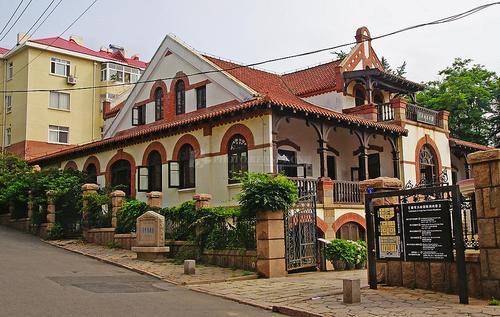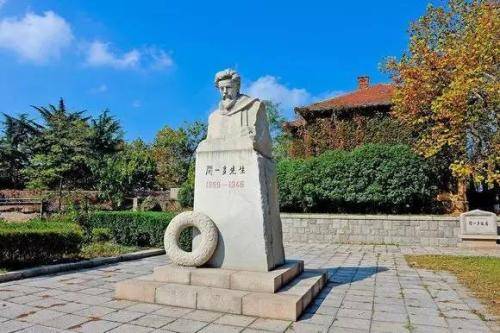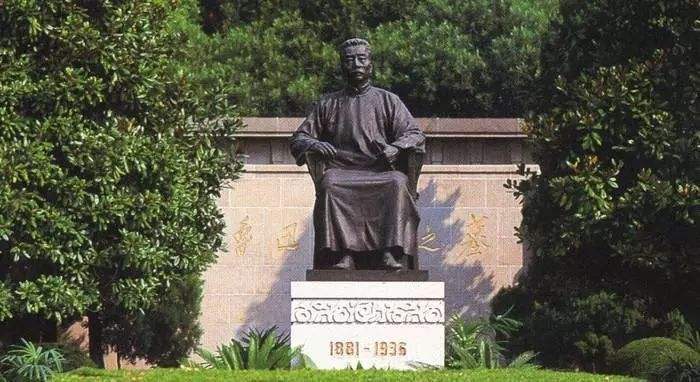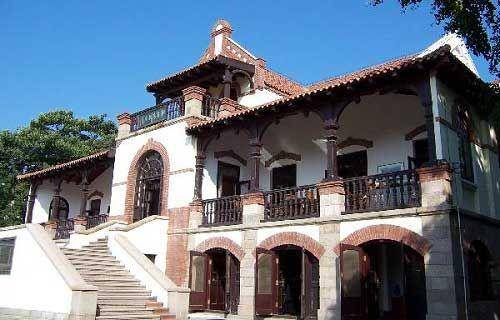Lao She came to Qingdao in 1934 to take up a position at Shandong University and stayed until 1937. He spent most of his time living here, which is one of his three temporary residences in Qingdao. The other two are located on Laiwu Road and Jinkou Road. He wrote many novels, essays, and articles here, including the famous novel 'Rickshaw Boy'. The second floor was occupied by the three siblings Huang Zongjiang, Huang Zongluo, and Huang Zongying.
Wen Yiduo Former Residence
Wen Yiduo Former Residence is located at No. 5 Yushan Road, Southern District, Qingdao City, Shandong Province, within the campus of Ocean University of China. This building was constructed in the 1920s and features a Southern European architectural style. It is a brick and stone structure with two floors above ground, a basement, and an attic. The roof is sloped on all four sides. The building covers an area of 214 square meters and has a floor area of 607 square meters. Wen Yiduo lived in a room on the south side, which is about 20 square meters. In August 1930, he was invited to Qingdao to serve as the Dean of the College of Liberal Arts and the Head of the Chinese Department at Qingdao University. He lived in this building until the summer of 1932, hence it is also known as 'Yiduo Building'.
Lu Xun Park is a seaside park in Qingdao that is open to the public for free. The seaside features large areas of reddish-brown reefs, creating a unique scenery. It is a popular spot for newlyweds to take wedding photos. You can take a leisurely walk along the seaside trail, listen to the sound of waves crashing against the rocks, or climb up to the pavilion on the high rocks to enjoy a distant view of the sea, which is very pleasant.
Liang Shiqiu Former Residence, built in 1928. In the 1930s, Liang Shiqiu lived here while teaching in the Foreign Languages Department of Shandong University. It is a mixed Chinese and Western style building with a brick and stone structure, covering an area of 546.69 square meters, with a building area of 447 square meters. It has 2 floors above ground and 1 underground. The foundation is made of granite, with a sloping red tile roof. The main entrance faces south, and there is a balcony above the second-floor main door. The interior has wooden floors without any carvings. The entire building is simple yet practical.
From 1931 to 1933, Shen Congwen lived here while teaching in the Chinese Literature Department at Qingdao University. In 1932, Ba Jin also stayed at Shen Congwen's residence when he came to Qingdao. During this period, Shen Congwen created several famous works such as 'Autobiography of Congwen', 'Remembering Ding Ling', 'Moonlit Scenery', and 'Eight Steeds'. 'Border Town' was also conceived during this time. Fushan Road is a street of celebrities, and there are many former residences of famous people in the surrounding area.
Kang Youwei was a leading figure in the late Qing Dynasty reform movement. After the failure of the reform, he went into exile overseas and returned to China after the Xinhai Revolution. In 1923, after coming to Qingdao, Kang Youwei bought this house and was very satisfied with it, saying 'This house in Qingdao is the best I have ever had in my life,' and 'This house is small but the garden is very large, and the sea is only a hundred steps away.' Kang Youwei stayed here for a period of time every year until he passed away at Tianyou Garden on March 31, 1927.















